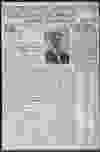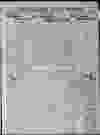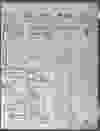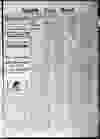
While media coverage of federal elections has evolved over the years, some aspects of election reporting remain the same. One basic tenent that’s held true over decades is that people want to hear the results of an election as quickly as possible. They want to know who won where. If you look back to early editions of the Calgary Herald the day after an election, results dominated the newspapers’ pages.
A look at the Herald’s front page on Sept. 22, 1911 reveals something else — many people didn’t want to wait to find out the results of an election. So, they did the only thing they could. They would gather outside the Herald’s office to get immediate election results, as info arrived over the Herald’s news wires. These turnouts — which would occur at newspaper offices across the continent — became key community gatherings for many a year. Radio was still in its infancy; television was decades away; and the idea of an internet was still far beyond any inventors’ imagination. So, when early Calgarians wanted to know what was going on in the world — fast — they had one choice: They headed down to the office of the Calgary Herald.
Over the years, newspapers employed a variety of methods to quickly share “breaking” news with their communities. As one story on the below 1911 front page demonstrates, the crowd that gathered outside the Herald office on federal election night was the largest crowd that had ever gathered in Calgary’s history. The Herald created an elaborate system of bulletin boards that showed every riding in the country; results were posted on these bulletin boards as they arrived on the wire. Special editions of an “election extra” were sent out to the street on a regular basis throughout the night. A megaphone was also used to make announcements to the crowd when key results arrived. And, on a wall across the street from the newspaper office, the Herald projected and flashed election results. (Election gatherings in following years even saw the Herald arrange for bands to entertain the crowds outside its office.)
The night of the 1911 federal election, a party atmosphere was in full swing outside Herald offices. Many Calgarians were pleased to hear that Robert Borden’s Conservatives were bumping Wilfrid Laurier’s Liberals out of power. “The crowd started to sing patriotic songs, ceasing every few minutes to renew their cheering,” a front page story said. “The vociferous demonstrations of delight by the crowd were never greater than when one after another, the bulletins told of the defeat of members of the Liberal cabinet . . . That they were to be eliminated from the house of commons appeared to be the source of great delight.”
Here’s a look at the Herald’s front page coverage of that evening and a few previous federal elections.




